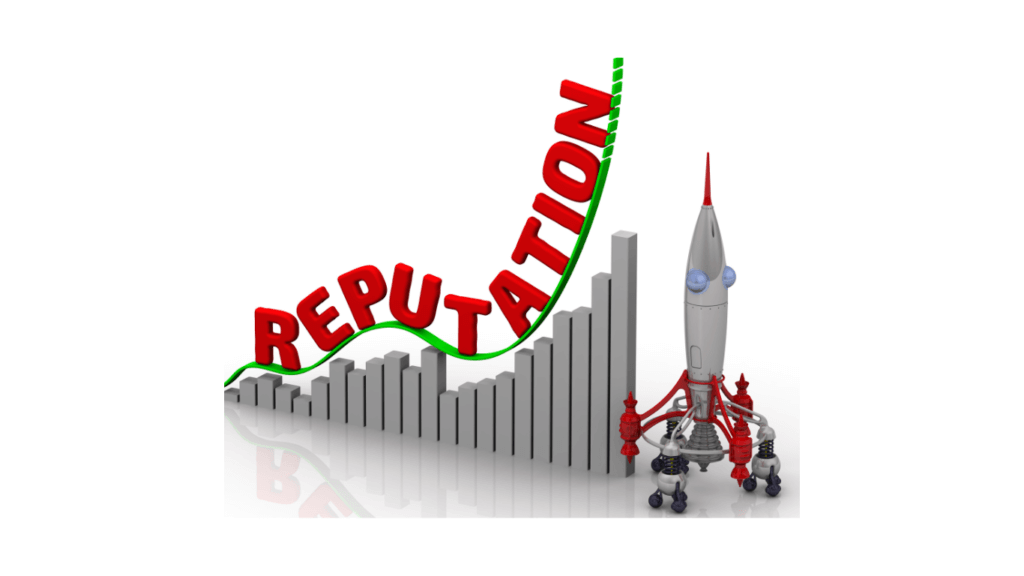Introduction to Brand Reputation Management
What is Brand Reputation Management?
Brand Reputation Management refers to the process of influencing and controlling how your brand is perceived by customers, stakeholders, and the public. A positive brand reputation builds trust, fosters loyalty, and attracts new customers, while a negative one can harm a business’s growth and profitability.
Why Brand Reputation is Crucial for Business Success
Your reputation is a critical factor in the decision-making process of potential customers. In a world where information is just a click away, businesses must actively manage their reputation to stay competitive and relevant.

The Importance of Brand Reputation in the Digital Age
Impact of Social Media on Brand Reputation
Social media has revolutionized how brands communicate with audiences. Platforms like Facebook, Instagram, Twitter, and LinkedIn provide opportunities for direct interaction with customers. However, they also serve as grounds for public scrutiny, where negative feedback can escalate quickly. Brands must actively monitor their social presence to stay ahead of potential issues.
How Online Reviews Shape Public Perception
Online reviews significantly impact consumer decisions. A survey by BrightLocal found that 87% of consumers read reviews for local businesses, emphasizing their importance in shaping brand perception. Businesses with more positive reviews are likely to attract more customers than those with a history of unresolved complaints.
Key Components of Effective Brand Reputation Management
Monitoring Your Brand’s Online Presence
Being proactive about tracking mentions of your brand across multiple platforms helps you stay informed about customer sentiment. Set up alerts to flag mentions on social media, blogs, and forums, enabling immediate response to concerns or praise.
Managing Customer Feedback and Complaints
Effectively handling complaints is integral to reputation management. A timely, empathetic response can turn negative experiences into positive outcomes, showcasing your brand’s commitment to customer satisfaction. This not only retains customers but can also improve brand perception.
Building a Positive Brand Image
Proactively creating and sharing content that aligns with your brand’s mission and values helps shape a favorable image. From community involvement to showcasing success stories, these efforts reinforce the trust of existing customers and attract new ones.
Strategies for Long-Term Brand Reputation Management
Developing a Strong Brand Identity
A clear brand identity establishes the tone for how people view your company..Consistent messaging, visuals, and values across all channels create a cohesive image, making your brand memorable and trustworthy.
Engaging with Your Audience Authentically
Authenticity is the cornerstone of building strong relationships with customers. Engaging with audiences through meaningful conversations, rather than promotional messages, fosters genuine connections. Attend Q&A sessions, reply to comments, and place a high value on open communication.
Leveraging Influencers and Brand Advocates
Influencers and loyal customers play a significant role in reputation management. Their endorsement of your brand builds credibility, as they often act as trusted sources for their followers. Encourage satisfied customers to leave reviews, share testimonials, and become brand advocates.
Crisis Management in Brand Reputation
Identifying Potential Reputation Risks
Understanding potential threats to your reputation helps you prepare in advance. Conduct regular audits to identify vulnerabilities such as dissatisfied employees, customer complaints, or negative press.
Steps to Handle PR Crises Effectively
Acknowledge the situation publicly. Transparency is essential in crisis management.
Apologize if necessary and assure stakeholders that corrective measures are in place.
To preserve trust, give frequent updates as the situation changes.
Learning and Growing Post-Crisis
After resolving a crisis, conduct a post-mortem to identify what went wrong and develop strategies to prevent similar issues in the future. This reflective approach demonstrates a commitment to continuous improvement.
Tools and Technologies for Brand Reputation Management
Social Media Listening Tools
Social media listening tools enable brands to track conversations about them in real time. These tools identify both positive and negative sentiments, providing valuable insights to guide engagement strategies.
Reputation Monitoring Platforms
Platforms that centralize customer reviews and ratings across channels simplify tracking and responding to feedback. These tools ensure timely responses and foster better customer relationships.

Analytics and Reporting Tools
The core of reputation management is data-driven decision-making. Analytics tools help brands measure the effectiveness of their strategies by analyzing trends and patterns in customer interactions.
Case Studies: Success Stories in Brand Reputation Management
Brands That Excel in Reputation Management
Starbucks has consistently maintained a positive brand reputation through a combination of corporate social responsibility and exceptional customer service. By promoting initiatives like ethical sourcing and environmental sustainability, Starbucks has cultivated a loyal customer base.
Lessons Learned from Reputation Management Failures
One notable example is the backlash faced by a major airline during a passenger removal incident. This highlighted the importance of employee training, crisis management protocols, and the need for consistent messaging in damage control efforts.
The Role of Content in Brand Reputation Management
Creating High-Quality Content to Build Trust
Content that aligns with your brand’s values and addresses customer pain points strengthens your reputation. Blogging, videos, and social media posts can help position your business as an industry leader.
Using Content to Address Negative Publicity
Publishing thoughtful responses to negative publicity showcases accountability and professionalism. Transparency in addressing issues demonstrates your brand’s commitment to improving and meeting customer expectations.
Future Trends in Brand Reputation Management
The Growing Role of AI in Reputation Management
AI technologies are reshaping how brands monitor and respond to reputation issues. AI tools can predict sentiment trends, analyze large datasets quickly, and provide actionable insights to improve customer interactions.
Evolving Consumer Expectations
Consumers now demand authenticity and ethical behavior from brands. Meeting these expectations requires businesses to not only manage their reputation actively but also uphold their promises consistently.
Conclusion: Sustaining Brand Reputation for Long-Term Success
Recap of Key Strategies
Effective brand reputation management involves proactive monitoring, meaningful engagement, and swift crisis handling. Building and sustaining a positive reputation requires consistent effort but offers long-term rewards in customer trust and loyalty.
Final Thoughts
Investing in reputation management is not just a defensive strategy but a proactive approach to building a resilient brand. As consumer expectations evolve, businesses that prioritize reputation management will thrive in competitive markets.


